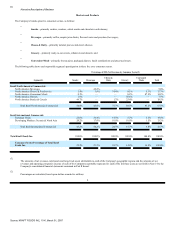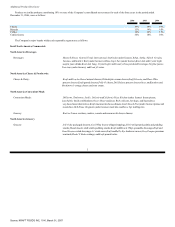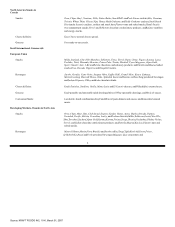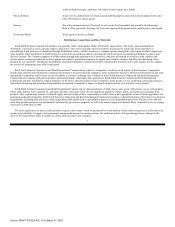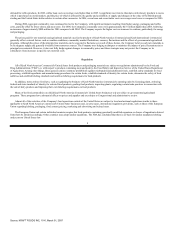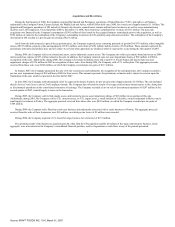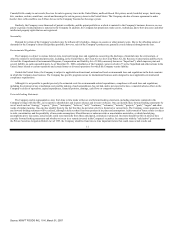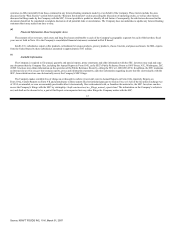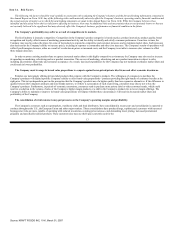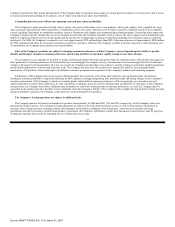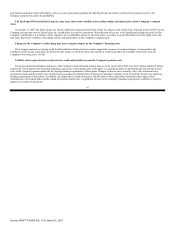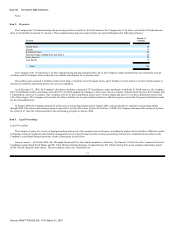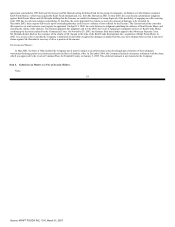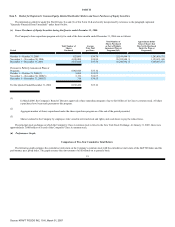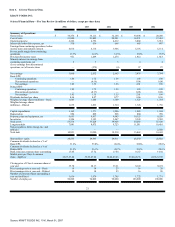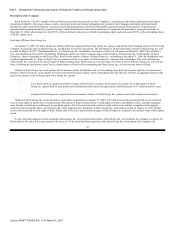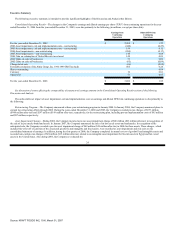Kraft 2006 Annual Report Download - page 18
Download and view the complete annual report
Please find page 18 of the 2006 Kraft annual report below. You can navigate through the pages in the report by either clicking on the pages listed below, or by using the keyword search tool below to find specific information within the annual report.
Company's products for their private label products. If the Company fails to respond to these trends, its volume growth could slow or it may need to lower prices
or increase promotional spending for its products, any of which would adversely affect its profitability.
Commodity price increases will increase operating costs and may reduce profitability.
The Company is a major purchaser of milk, cheese, plastic, nuts, green coffee beans, cocoa, corn products, wheat, pork, poultry, beef, vegetable oil, sugar,
other sweeteners and numerous other commodities. Commodities such as these often experience price volatility caused by conditions outside of the Company's
control, including fluctuations in commodities markets, currency fluctuations and changes in governmental agricultural programs. Commodity prices impact the
Company's business directly through the cost of raw materials used to make the Company's products (such as cheese), the cost of inputs used to manufacture and
ship the Company's products (such as oil and energy) and the amount the Company pays to produce or purchase packaging for its products (such as cardboard
and plastic). For 2006, the Company's commodity costs were approximately $275 million higher than 2005, following an increase of approximately $800 million
for 2005 compared with 2004. If, as a result of consumer sensitivity to pricing or otherwise, the Company is unable to increase its prices to offset increased cost
of commodities, the Company may experience lower profitability.
Sales of the Company's products are subject to changing consumer preferences, and the Company's success depends upon its ability to predict,
identify and interpret changes in consumer preferences and develop and offer new products rapidly enough to meet those changes.
The Company's success depends on its ability to predict, identify and interpret the tastes and dietary habits of consumers and to offer products that appeal to
those preferences. Consumer preferences for food products are ever-changing. For example, recently, consumers have been increasingly focused on health and
wellness with respect to the food products they buy. As a result, the Company's products have been subject to scrutiny relating to genetically modified organisms
and the health implications of obesity and trans-fatty acids. The Company has been and will continue to be impacted by publicity concerning the health
implications of its products, which could negatively influence consumer perception and acceptance of the Company's products and marketing programs.
Furthermore, if the Company does not succeed in offering products that consumers want to buy, the Company's sales and market share will decrease,
resulting in reduced profitability. A significant challenge for the Company is distinguishing among fads, mid-term trends and lasting changes in the Company's
consumer environment. If the Company is unable to accurately predict which shifts in consumer preferences will be long-lasting, or to introduce new and
improved products to satisfy those preferences, its sales will decline. In addition, given the variety of backgrounds and identities of consumers in the Company's
consumer base, the Company must offer a sufficient array of products to satisfy the broad spectrum of consumer preferences. As such, the Company must be
successful in developing innovative products across a multitude of product categories. Finally, if the Company fails to rapidly develop products in faster growing
and more profitable categories, the Company could experience reduced demand for its products.
The Company's foreign operations are subject to additional risks.
The Company operates its business and markets its products internationally. In 2006 and 2005, 39% and 38%, respectively, of the Company's sales were
generated in foreign countries. The Company's foreign operations are subject to the risks described in this section, as well as risks related to fluctuations in
currency values, foreign currency exchange controls, discriminatory fiscal policies, compliance with foreign laws, enforcement of remedies in foreign
jurisdictions and other economic or political uncertainties. In particular, the Company's subsidiaries conduct their businesses in local currency and, for purposes
of financial reporting, their results are translated into U.S. dollars based on average
14
Source: KRAFT FOODS INC, 10-K, March 01, 2007


